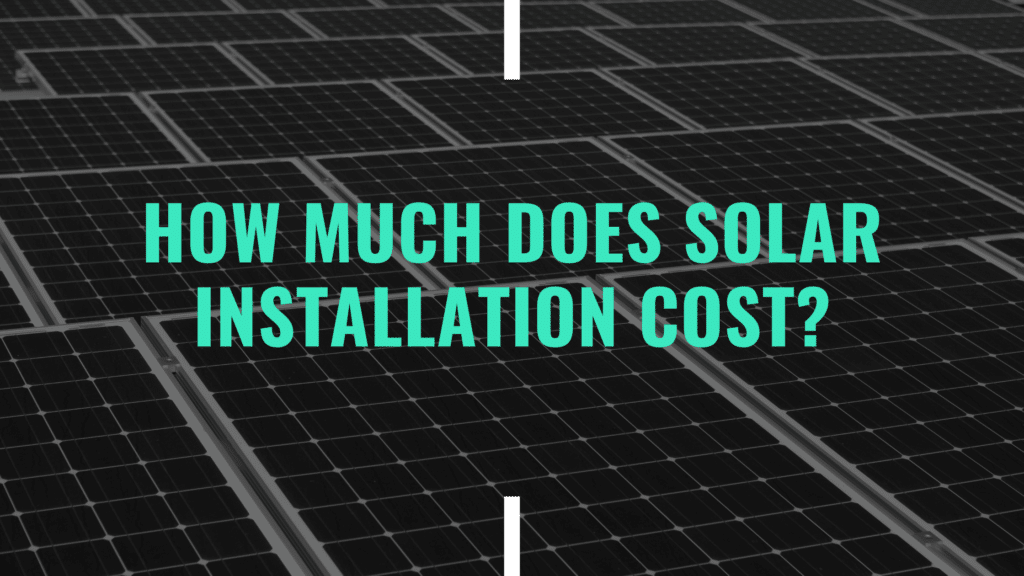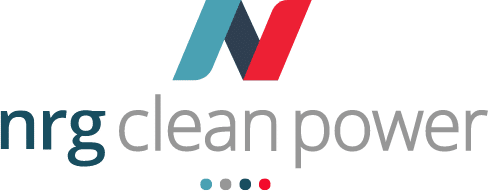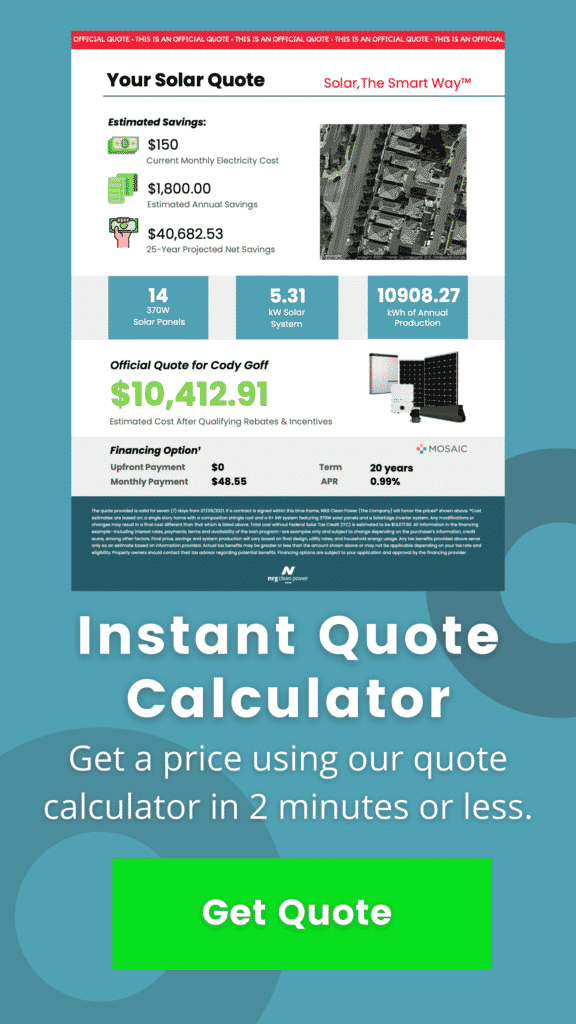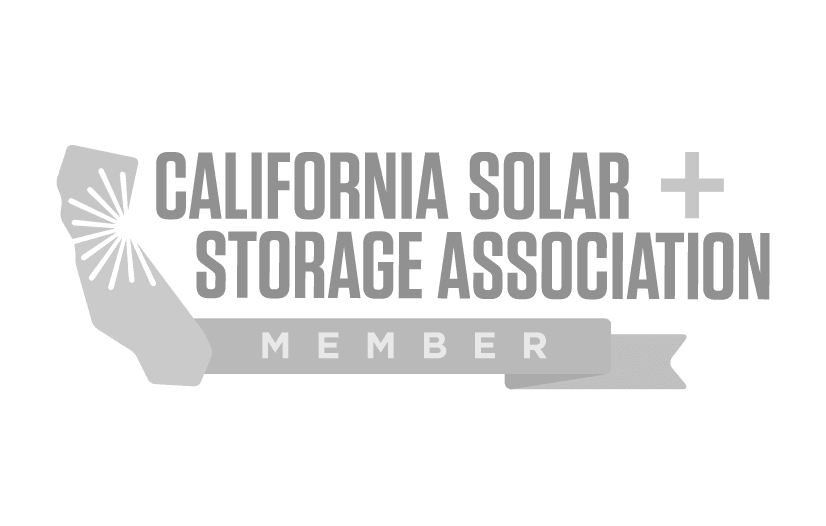
Homeowners facing steep electricity expenses have the opportunity to make substantial savings by partnering with leading solar energy companies.
However, they should expect an initial investment ranging from $17,430 to $23,870 for a solar system, with an average expenditure of around $20,650.
Thankfully, the majority of homeowners can recoup their solar investment within six to ten years, influenced by factors such as home size, electricity rates, and available financing choices.
In the following sections, we will examine the primary factors influencing the cost of solar panel systems and propose strategies for reducing your investment.
What is the Average Solar Installation Cost in the US?
As per the most recent comprehensive data from the Lawrence Berkeley National Laboratory, a Department of Energy Office of Science facility, the mean expense for solar installations in the United States stands at $31,558.
This calculation is derived by considering the cost per watt.
Currently, the average price per watt in the U.S. is $3.67 for an 8.6 kW system. Before factoring in incentives, it’s advisable to compare the average solar cost in the U.S. based on the size of the system.
| Solar system size (kW) | Average Cost (Before Incentives) | Estimated Annual Energy Production |
| 4 kW | $11,400 | 5,600 kWh |
| 6 kW | $17,100 | 8,400 kWh |
| 8 kW | $22,800 | 11,200 kWh |
| 10 kW | $28,500 | 14,000 kWh |
| 12 kW | $34,200 | 16,800 kWh |
To determine the projected cost of a system, you can calculate it by multiplying the price per watt by the chosen system size. The appropriate system size is contingent on your energy consumption, typically assessed over a 12-month period.
Reviewing past electricity bills can provide a monthly estimate of your energy usage, which can then be used to ascertain your total energy consumption over the course of a year.
What Is the Cost of Solar Panels by State?
Solar savings differ across states, influenced in part by the average electricity expenses in each area. For instance, Hawaii, with its highest electricity rates, offers greater potential savings compared to Louisiana, which boasts the lowest rates.
Therefore, residents of Hawaii can anticipate larger savings from solar adoption than those in Louisiana.
Cost of Solar Panels by Type
When preparing your solar panel system budget, you may come across three distinct types of solar panels. It’s crucial to consider these variations in cost before making your choice.
Monocrystalline Solar Panels
Monocrystalline solar panels usually cost between $1 to $1.50 per watt and are popular among consumers. They are made using single silicon crystals, cut into thin octagonal discs for optimal efficiency. Despite their enhanced efficiency, their higher cost makes them pricier to acquire and install compared to other types.
Polycrystalline Solar Panels
Polycrystalline solar panels have an average cost ranging from $0.90 to $1.50 per watt. Both polycrystalline and monocrystalline solar panels belong to the category of photovoltaic (PV) solar panels, converting sunlight into electricity.
Unlike monocrystalline cells, polycrystalline panels consist of fragmented silicon crystals cut into wafer-like shapes. This manufacturing process yields a more affordable product produced more quickly, albeit with reduced efficiency compared to monocrystalline panels.
Thin-Film Solar Panels
Thin-film solar panels are priced between $0.50 and $1.50 per watt, making them a cost-effective option. They utilize photovoltaic materials like other solar panels but often employ amorphous silicon, lacking a crystalline structure.
Despite their lower efficiency and shorter lifespan of 10 to 20 years, compared to traditional PV panels, thin-film panels are environmentally preferable due to their easy manufacturing process and suitability for mobile applications like RVs, thanks to their lightweight nature.
What Is the Cost by Type of Solar System?
The type of solar energy system chosen also plays a role in determining the price. There are three system options available: grid-tied plus storage, off- grid, and grid-tied.
- Grid-tied system plus storage: A hybrid system involves connecting your solar panels to the utility grid while incorporating solar battery backup(s). This option is more expensive than a grid-only system. The initial cost of the hybrid system includes one or more solar batteries. As an illustration, the pricing for Tesla Powerwall begins at $9,200 for a standalone battery, but when bundled with a Tesla Solar panel system, the cost increases to $14,200.
- Off-grid system: An off-grid system stands out as the most expensive option, as it necessitates sourcing all electricity independently. This involves investing in high-capacity battery storage and a backup generator. According to our research, the costs for off-grid systems typically range between $45,000 and $65,000.
- Grid-tied system: A grid-tied system, also referred to as on-grid or utility-interactive, is the most cost-effective option because it doesn’t necessitate a battery. This eliminates a significant expense and reduces installation costs.
Solar Panel Installation Costs
The total cost of your solar panel installation can vary depending on several factors, including the number of watts, sunlight availability, and local incentives. Let’s explore how each of these factors can impact the expenses associated with transitioning to solar energy.
Price Per Watt
The total cost of solar panels, including installation, typically ranges from $2.40 to $3.60 per watt. Therefore, the overall amount you pay for your system depends on the number of watts needed to provide power for your home.
Amount of Sunlight
The expenses associated with your solar panel installation may vary based on the amount of sunlight exposure your panels receive. Sunlight availability is influenced by factors such as your location, climate, topography, and the level of shade coverage.
Local Incentives
The cost of your solar panel system can be affected by local and state incentives. Some local governments offer incentive programs that could decrease the cost of your panels by $2,500 or more.
You might also find additional incentives through referral programs in partnership with your local solar panel installation company.
To discover incentives in your area, you can use the Database of State Incentives for Renewables and Efficiency (DSIRE). This resource provides information on state-specific policies and incentives, assisting you in identifying and utilizing the most advantageous incentives.
Factors That Determine Solar Installation Costs
Several factors contribute to the pricing of solar panels, including the choice of solar company, the quantity of panels, eligibility for federal tax credits, the type of panels selected, and various other considerations. Let’s delve into the factors that can influence your solar panel costs.
Solar Companies
The cost of solar panels depends on the solar panel company you choose. This encompasses the solar equipment system itself, installation costs, and any additional features.
Prices may vary between companies, so it’s essential to evaluate your options and select the best solar company for your requirements.
Federal Solar Tax Credit
The federal solar tax credit operates as a rebate applied to your tax return, reducing the taxes you owe. For solar panels bought between 2022 and 2032, you’re eligible for a 30% tax credit.
This credit decreases to 26% in 2033, 22% in 2034, and expires in 2035.
For an average $18,150 solar panel system, this tax credit results in approximately $5,400 in savings, lowering your final price to about $12,700.
Size, Weight and Number of Panels
The number of solar panels needed to fully power your home generally ranges from 20 to 25, but it can vary from 15 to 34 panels. Factors like your home’s size, panel efficiency, and sunlight exposure determine the exact quantity required.
With solar panels priced between $2.40 and $3.60 per watt, the total cost of your system rises in proportion to the energy it must generate.
Type of Panels
The selection of solar panels affects the material costs of your solar system, ranging from $0.90 to $1.50 per watt. Monocrystalline panels usually sit at the higher end of the price range, while polycrystalline panels are in the middle range. Thin-film panels provide a cost-effective alternative.
It’s important to recognize that monocrystalline panels are valued for their higher efficiency compared to other types, offering a greater return on investment in terms of energy savings.
Efficiency
Choosing a more efficient solar panel enhances sunlight absorption and increases the conversion of energy into electricity for your home. While this ensures maximum output, it often comes with a higher initial cost.
Deciding whether to invest in high-efficiency panels requires weighing the pros and cons based on your budget and energy needs. Some homeowners may find it more cost-effective to opt for less efficient polycrystalline panels to balance the higher cost of monocrystalline panels.
Solar Panel Manufacturer
Solar panels can differ greatly in efficiency, with some manufacturers producing panels with higher ratings than others. For example, SunPower is renowned as a top solar company, providing in-house panels with an impressive efficiency of nearly 23%, compared to others which might rate closer to 19% or 20%.
High-efficiency solar panels require fewer panels to generate the same amount of energy, potentially leading to lower overall costs, despite their initial upfront cost being around $3.60 per watt.
Location
The number of solar panels necessary for a home can be affected by its location. For example, a house in a sunny state like Arizona, positioned on a hill with little tree coverage, may need fewer panels than a home in western Washington surrounded by trees and experiencing frequent rainfall.
Hence, it’s vital to take your location into account when assessing the number of solar panels needed to fulfill your energy needs.
Roof Pitch
Installing solar panels on a roof with a steeper pitch can present more challenges, potentially resulting in higher costs. Solar panel companies might adjust their quotes to accommodate the added complexity of the installation process in such situations.
Type of Mount
The selection of the mounting system for your solar panels can influence the cost per panel, ranging from $15 to $750. Here’s an overview of the various mount types:
- Adjustable Mount: Adjustable solar panel mounts provide the flexibility to raise or lower panels for better sunlight exposure. These mounts typically range from $30 to $250 per panel.
- Fixed mount: This particular mounting system is the conventional rooftop mount, with costs ranging from $15 to $50 per unit.
- Dual-Axis Tracker: Tracking mounts follow the sun’s movement, boosting sunlight exposure by 25% to 45% compared to standard mounts. The cost for these mounts varies from $450 to $775 per solar panel.
- Ground mount: A ground mount system is installed on the ground rather than on your roof, with prices ranging from $70 to $200 per panel.
Solar Panels Purchasing Options
Solar panel installation involves a substantial financial commitment, prompting companies to provide various payment options tailored to diverse budgets. Here’s an overview of the typical solar financing options offered by solar providers:
- Solar lease: This option involves making fixed monthly payments for approximately 20 years with minimal to no upfront cost. The solar installation company retains ownership of the system and is responsible for its maintenance. However, customers leasing the system do not qualify for solar incentives.
- Solar loan: Opting for a solar loan enables you to make smaller payments over an extended payback period. However, it’s important to note that you’ll end up paying more in the long run due to interest rates. The advantage of solar loans is that they still qualify you for solar incentives.
- Power purchasing agreement (PPA): Through a Power Purchase Agreement (PPA), you only pay for the energy you consume, similar to an electric bill. The monthly rate fluctuates based on usage. However, the solar company retains ownership of the system, which means you are disqualified from receiving incentives.
- Full payment: You can choose to pay for the solar system outright without opting for a loan or payment plan. This approach offers the advantage of saving the most money since you avoid interest rates. Additionally, full payment grants you ownership of the system, making you eligible for incentives.
Breaking Even on Solar Panel Costs?
In the United States, the average payback period for a solar panel system is about 8.5 years, with a typical lifespan of at least 25 years.
Estimates from the National Renewable Energy Laboratory suggest that solar payback periods can be even shorter, around four years for a standard monocrystalline solar panel system.
This implies that after your solar panels have generated energy for 25 years, you can anticipate approximately 21 years of free, clean energy once you break even.
Frequently Asked Questions (FAQs)
Does Solar Increase a Home’s Value?
Certainly, solar installations can enhance the value of your house by improving energy savings and increasing its overall appeal, which can be advantageous if you decide to sell.
Reports from Zillow and the U.S. Department of Energy’s Berkeley Lab have found that a significant portion of home buyers is willing to pay a premium for a home equipped with solar panels.
How Long Do Solar Panels Last?
Monocrystalline solar panels, commonly used in residential solar installations, generally have a lifespan ranging from 25 to 40 years. Most solar companies provide a 25-year warranty for these panels.
Are Solar Panels Worth It?
In the majority of cases, investing in solar panels for your home proves to be worthwhile. Numerous homeowners save thousands of dollars on energy bills throughout the lifespan of their solar panels, all while generating clean energy to power their homes.
How Much Money Do Solar Panels Save You Each Month?
A 6 kW solar system has the potential to save homeowners an average of $1,346 per year on energy bills, which equates to approximately $112 monthly. However, the exact savings can vary based on factors such as the specific system, location, and local electricity rates.
The Bottom Line
While solar panels demand a substantial initial investment, they offer both financial and environmental advantages in the long run.
Various factors, including the type of panels, climate conditions, and energy requirements, play a role in determining the overall costs and the viability of a solar investment.
Taking advantage of federal and state incentives can help reduce the upfront system costs, making it more feasible and enhancing the potential for long-term savings.


